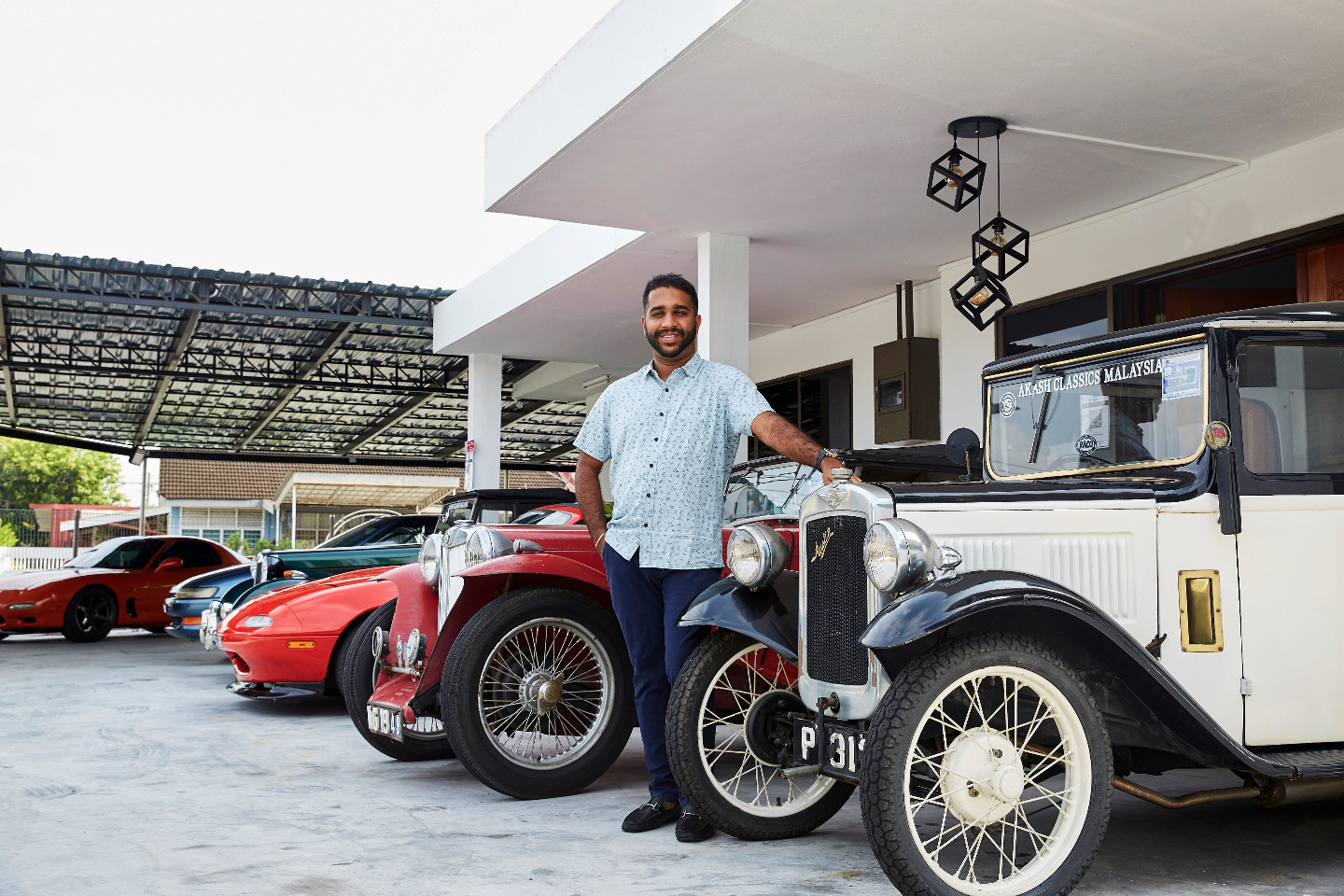
Akashdeep standing next to a Mercedes W140 Pullman (All photos: Soophye)
A career in the automotive industry was a done deal for Akashdeep Singh from the time he was a child, seeing as the industrious young lad was famous among his classmates for putting together and distributing his hand-written car magazines in school. But it wasn’t publishing that was his future: it was classic cars, a business he now runs in his hometown of Ipoh.
While one might think of the Klang Valley as being the centre of the classic car community in Peninsular Malaysia — and that assumption is indeed correct — it does not take into account the number of collectors who live farther afield and whose needs are not quite seen to.
“We were initially only serving the Klang Valley market, but started to get a lot of customers from the North, like Alor Setar and Penang. Ipoh is in the middle, which makes it a very strategic location. Plus I’m an Ipoh boy, so I was eager to go home and set up shop,” says Akashdeep, founder of Akash Classics Malaysia. Last May, he moved his business from KL to Ipoh and sales numbers have proven the wisdom of his decision: he has sold 64 cars, which works out to about five cars a month.
“It wasn’t just a pull from Ipoh, but a push,” he explains. “There are 12 registered classic car dealers in KL, including me, but none in the northern region! I believe we have created quite an impact, as we’ve sold a number of cars. Recently we acquired nine more — we are busy! This is a niche business and people come to us. Classic cars are rare and people don’t find them easily so they will look for a trusted dealer and go to them faithfully.”
_s1a3540a.jpg
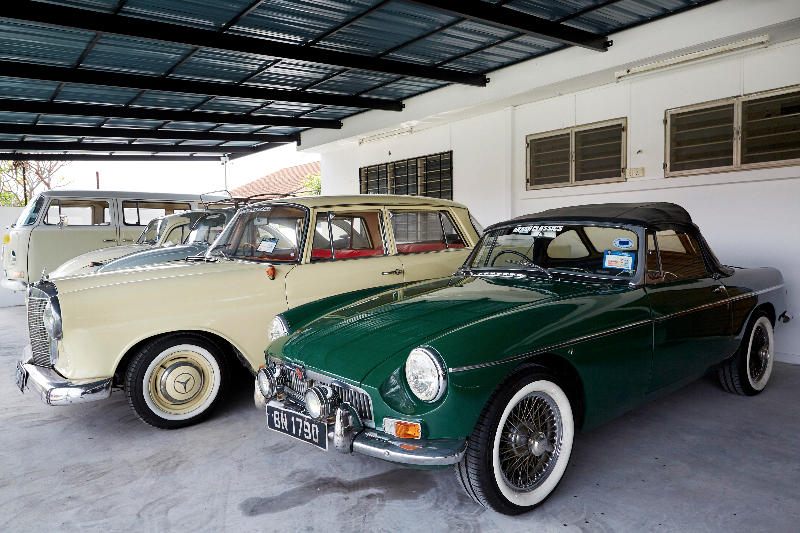
There is a strict classification system in the industry. Cars older than 25 years are considered classics, those in excess of 45 years are referred to as antiques and anything made between 1919 and 1930 are vintage, and also known as pre-war cars. The make does not matter as much as its age and condition, but that doesn’t mean that you can expect your old Datsun 130Y to sell in the hundreds of thousands of ringgit — generally speaking, continental cars are favoured and score extra marks if it they were produced in limited numbers, pioneered a new technology or raised the bar for consumer expectations.
For example, the most expensive car in Akashdeep’s arsenal now is a Mercedes W140 Pullman available for RM400,000 — only eight are available in Malaysia, and two owned by him and an associate, with the remaining six in private collections. A racing history adds to a vehicle’s allure and prior celebrity ownership also helps, especially if the individual is associated with cars, such as Steve McQueen, Paul Newman or Ayrton Senna.
As a rule of thumb, if teenagers once had a picture or poster of a particular car taped to their wall, you are looking in the right direction. When those children grow up, they want to buy the things that made them happy in their youth. To quote another example, Akashdeep is selling a JDM Mazda RX7 — similar to the ones used in the Fast & Furious franchise — for RM300,000. The rare non-continental car qualifies as an investable classic.
And investable is definitely what classic cars are — if you can afford to play the game, profits are yours for the taking. According to the Knight Frank Luxury Investment Index, the value of luxury goods has grown 129% over the past 10 years. Classic cars, rare whisky, handbags and wine, all notched up increases in value of more than 100% in the same period. Second to rare whisky, which rose in value by 478% in 10 years, classic cars saw a 6% 12-month change and 193% over the last decade.
_s1a3521.jpg
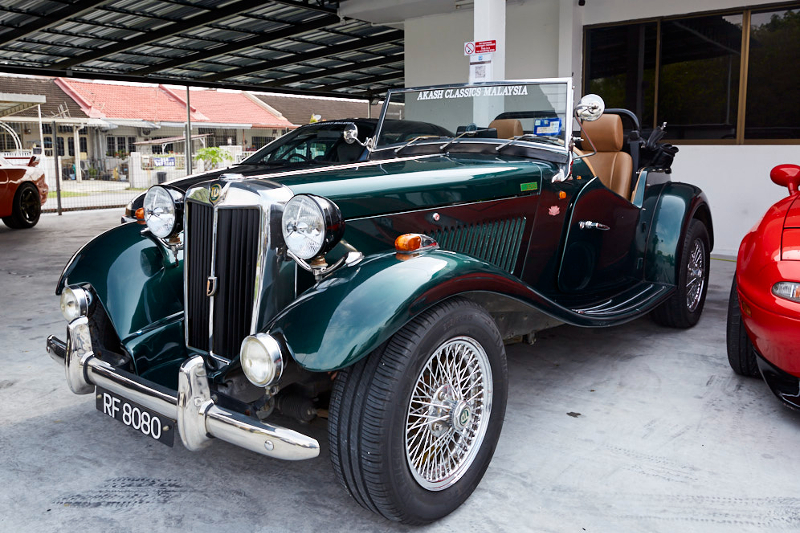
Thanks to increasing global wealth chasing a limited number of vehicles, the market for classic cars has done better than collectibles like coins and stamps, sometimes even beating the broad stock index. During the last two years, this proved to be accurate for Akashdeep and his contemporaries when multiple sellers turned in their classic cars for quick cash, while those who benefited from the pandemic had extra funds to invest and put them into classic cars.
“The MCO was actually really good for me,” Akashdeep says. “While it’s unfortunate that some people were forced to sell their cars, it’s a good thing that they could liquidate this asset so fast and have the funds in hand. On the other hand, collectors flush with cash were eager to shore up their own personal collections. The industry actually grew a great deal over the last two years!”
At present, Akashdeep has a total of 37 cars in his dealership for sale. Prices range from RM400,000 for the Pullman and RM288,000 for his oldest car, a 1927 Austin 7, right down to RM30,000 for classic Mini Cooper and RM40,000 for a BMW Z3. The profit margin on each sale depends on the car, and is understandably a closely guarded secret. “It’s like a chef giving out all his recipes,” he quips. “Some details we simply do not release to the public but, generally, this part doesn’t bother them so much — buyers just want to know how good a condition the car is in, and since we have had a great reputation for the last 13 years in the business, our customers trust our judgement. We would never sell a car we don’t 100% believe in.”
According to Akashdeep, maintenance remains a challenge in his industry — parts are hard to come by and are often expensive, and there is always the concern about roadworthiness. “Classic cars are fragile things and the biggest challenge is going to be caring for one,” he warns. “But it’s not impossible, of course. Parts can be shipped from the UK. Bangkok has emerged as one of the world’s largest manufacturers of after-market parts for classic cars, and we see growth in China for this too. Basically, as demand grows and the industry thrives, there will be support for it. If you own a classic car, you just have to be aware of the challenge of maintenance, and work around it — that’s all.”
_s1a3532a.jpg
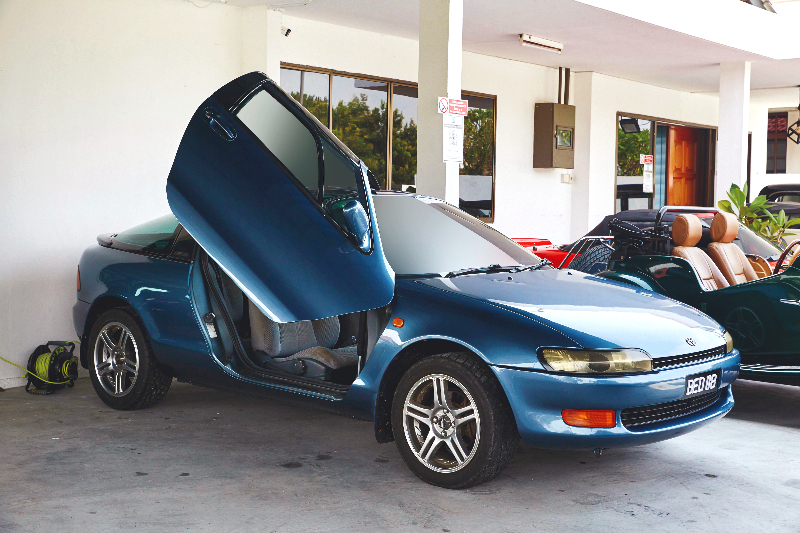
When asked for tips on how to make your new car an investable classic one day, Akash has one piece of advice: “Change nothing. Classic car enthusiasts want to see everything in its original state, so make sure you don’t change anything, and care for your car obsessively because you want it to really last.”
Akashdeep isn’t revealing too much about his business model but he does share some insights on how things work. In order to obtain collectible cars to trade, he has agents who scour the nation’s garages for possible finds. Once negotiations are completed and the car’s ownership changes hands, Akashdeep conducts live previews on social media and buyers lock in their interest — most deals are sealed without the new owner having physically seen the car. No walk-ins are allowed at his dealership in Ipoh, viewings are only by prior appointment.
“Most of our cars are locally sourced, up to 90% — where from I cannot say. Many are from hidden locations because owners and collectors who know their worth keep them hidden,” he shares. “We do get some stock from the UK as well, but that’s not very often.”
Malaysia has a good regional reputation for classic car trading — Asia’s biggest collector is based here — but there are certain issues plaguing its future growth, according to Akashdeep. First and foremost is supply, because “we need more cars in order to grow the business. Right now, there aren’t many. The cars we are allowed to bring in need to be 35 years or older, which are antiques, so we are missing out a little on the classic car segment.”
_s1a3570.jpg
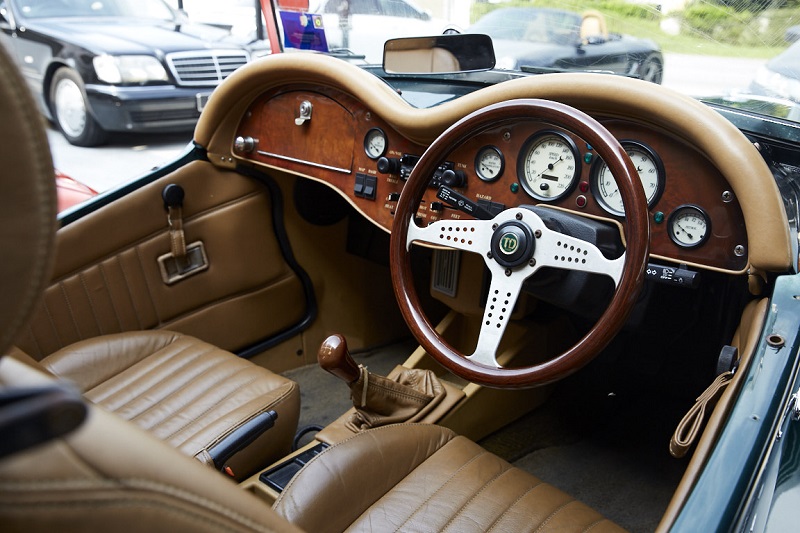
“Second, and this is the bigger issue, is funding — at present, the entire industry operates on cash terms, as no bank will provide a loan for the purchase of a classic car. Not everyone is cash rich, and this also locks out a huge middle-class market. Should they at some point have access to bank loans so they can buy classic cars, it would really cause a surge in the industry — and that’s a good thing! We need more cars, and more players, so we need policy changes for this to happen.”
Despite multiple calls for him to join the automotive industry, Akashdeep is insistent on staying put where he is — classic cars is a calling, he laughs. Having tried his hand at many other businesses — including licensed moneylending — he says it is impossible to replicate the rush of finding a new classic car and passing it on to its new owner.
“I remember the first classic car I bought was a Mercedes-Benz 300 SEL, for RM3,000, which I soon sold for RM6,000 — that made me realise that there was more to this business than meets the eye,” he smiles. “New cars are brilliant, don’t get me wrong, but you lose value the minute you sign the papers. With a well-cared-for classic car, the value goes nowhere but up.”
For more information, visit Akash Classics Malaysia on Facebook here.
This article first appeared on May 9, 2022 in The Edge Malaysia.


